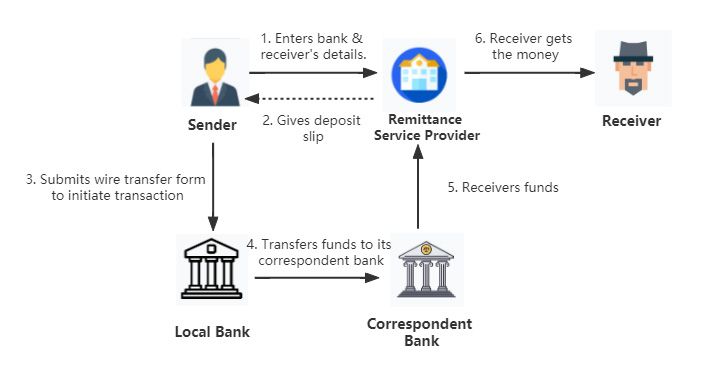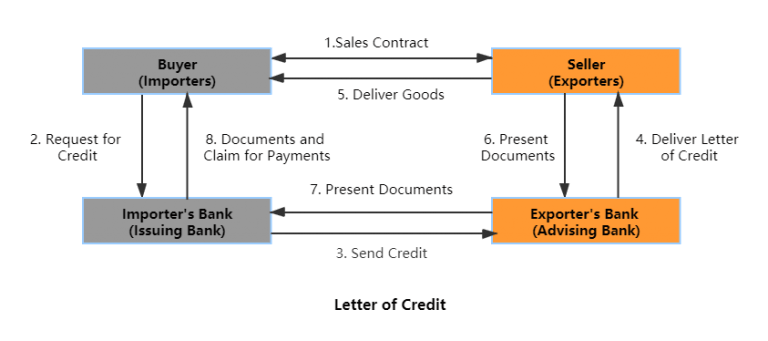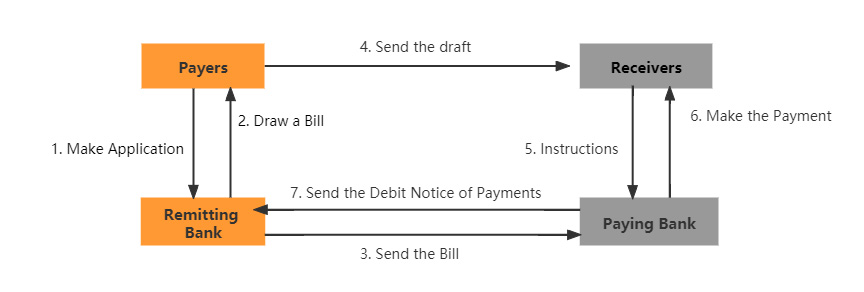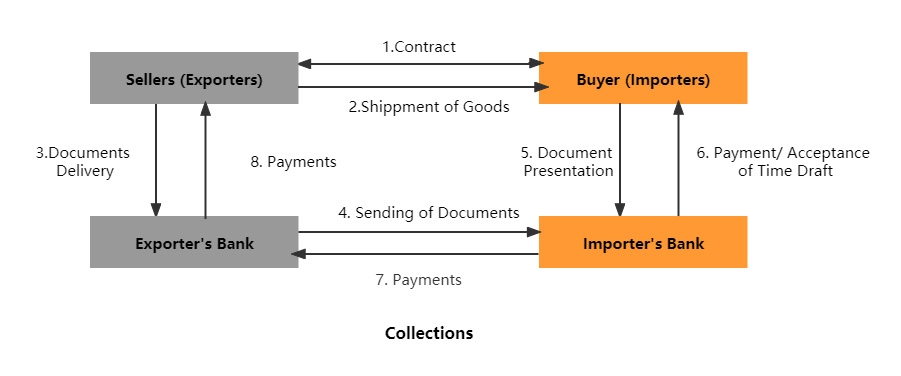When you do cross-border business, you cannot avoid international payment transactions. There are so many international payment methods for you to choose from, and you must be confused about how to choose and have trouble with the international payment processes.
Don’t worry. This article concludes the process of common international payment methods. We hope it is useful for you to have a basic understanding of each payment process of international payment methods.
What are the Transaction, Liquidation and Settlement?
Before introducing detailed international payment processing, you should be clear about three concepts about payment.
Payment refers to the money stock transferred from payers to receivers. It includes three processes: transaction, liquidation and settlement.
- Transaction:
Producing, verifying and sending the payment instructions.
- Liquidation:
Changing payment instructions, and calculating claims and debts for settlement.
- Settlement:
Finishing transfer of funds, according to the final clearing data.
What are the Payment Processes of Remittance?
The international payment method of remittance includes three types:
- Telegraphic transfer
- Demand draft
- Mail transfer
This part mainly lists the international payment processes of the telegraphic transfer and the demand draft.
How to Use Telegraphic Transfer to Make International Payments?
Before using the telegraphic transfer to make international transactions, you need to get the necessary information of receivers, including their account and bank names, numbers, and addresses.
Based on the information, then you can finish the telegraphic transfer with the following steps.
- Step 1:
The payer needs to find a place for making transactions. You can choose online telegraphic transfer or finish it in the offline bank.
- Step 2:
Payers need to take necessary documents or information, following the instructions step by step to make transactions.
- Step 3:
Payers ask for an application of telegraphic transfer and send money to the remitting bank. When receiving the application and the payment, the bank will check all the information and then send a telex to the paying bank.
- Step 4:
After receiving the notice, the paying bank will send an advice to the receiver. According to the advice, the receiver draws money from the bank.
- Step 5:
The paying bank needs to send a debit notice of payment to the remitting bank.
- Step 6:
The remitting bank finishes the payment and sends the receipt to the payer.

If you want other services or consider the charges, you can also choose a third party to help you finish the telegraphic transfer, like SWIFT. Some financial institutions can provide the same services but charge fees as well.
What’s the Payment Process of the Demand Draft?
The payment process of the demand draft (also called sight draft) is similar to the telegraphic transfer.
For example, Amy is a businessman from the USA. She imports a large amount of products from China and she chooses the demand draft (D/D) to pay. So what should she do?
The basic steps are as follows:
- Step 1:
Amy should go to the local bank (the remitting bank) to check her bank account and confirm the money in the account. Then she needs to apply for a demand draft, filling in a form with necessary information.
- Step 2:
After she finishes the application and makes the payment to the bank, the banker will check all information and charge service fees for D/D. Then the remitting bank will send a notice of the demand draft to the paying bank.
- Step 3:
After the paying bank gets the notice, the seller (who sells products to Amy) needs to draw money from the bank according to the demand draft.
- Step 4:
After payments, the paying bank sends a debit notice of payments to the remitting bank. The latter bank needs to finish the payment.
What’s the Process of L/C Payment?
The letter of credit includes import L/C and export L/C. In essence, they are the same documents. The L/C payment process is as follows:
- Step 1:
After signing a contract between both parties, importers make an application of issuing a letter of credit to the issuing bank.
- Step 2:
The issuing bank sends the L/C to the advising bank for verifying, and the advising bank sends the L/C to exporters.
- Step 3:
Exporters deliver the goods and submit documents to the reimbursement bank.
- Step 4:
Then the reimbursement bank processes the documents to the issuing bank for payments.
- Step 5:
The issuing bank makes the payment and sends bills to importers.
- Step 6:
Importers pick up goods according to the bills and then finish the payments to the issuing bank.

Take Amy as an example, she wants to choose L/C to pay this time. How does she do?
After signing the contract with the seller, she needs to apply for the issuing of L/C to her bank. Then her bank (the issuing bank), the advising bank and reimbursement bank will finish the second, third and fourth steps mentioned above.
After Amy receives the bill from her bank, she can pick up goods with the bill and then finish the final payment.
How to Use PayPal to Transfer Money Internationally?
PayPal is a kind of online payment; it is more suitable for small businesses or individual transfers. You can use it to send money by following the below steps:
- Step 1:
Click the menu bar of service “Send& Request”
- Step 2:
Choose the receiver you want and enter the money amount
- Step 3:
Click “Sending to a friend”, it charges no fees
- Step 4:
Choose “Send Payment Now” and finish the paymen
More questions about PayPal, including transaction fees, risks are mentioned in my another post. We hope it will be helpful.
What’re the Processes of Collection Payment?
Collection (documentary collection) is a common payment method in international transactions.
The basic steps of collection payment are as follows:
- Step 1:
Both parties sign a contract. Then exporters apply for the collection to the exporter’s bank. The bank sends the draft to the importer’s bank.
- Step 2:
After receiving the draft, the importer’s bank chooses one of two ways to send documents to importers.
- Send documents after importers finish all the payments.
- Send documents after importers sign and promise the paid date to the bank.
- Step 3:
Importers take delivery of goods according to the documents.
- Step 4:
The importer’s bank sends the payments to the exporters.
Take Amy as an example again, she wants to choose the documentary collection to pay this time. The beginning steps are similar to D/D. But the time that she can pick up goods is different.
The documentary collection includes two types:
- Documents against payment (D/P)
- Documents against acceptance (D/A)
Documents against Payment
The document against payment (D/P) is a type of collection. It includes D/P at sight and D/P after sight.
The basic payment process steps are as follows:
D/P at Sight
If Amy wants to choose D/P at sight, she can only pick up goods after finishing all the payments. Half payment or just a part of the deposit would not be allowed for her to take delivery of goods.
D/P after Sight
If Amy wants to choose D/P after sight, she needs to make a promise of the paid date with the bank. This step is necessary for her to pick up goods, even though she has not finished all the payments yet.
Documents against Acceptance
D/A is similar to D/P, but the difference is the time of payment from importers (buyers). D/P requires buyers to pick up goods only after finishing payments, while D/A allows buyers to take delivery of goods by promising the paid date to the bank.
FAQs about International Payments
What is the process of international payment?
The process of international payments or international transaction refers to a trade agreement or a business of credit between different regions or countries. It requires operating transactions, liquidation and settlement involving different currencies.
What is the best international payment method?
To be honest, there are no best international payment methods. Considering different factors, each payment method has advantages and disadvantages.
If you want to make transactions of small amounts, PayPal is a good choice for you. If you require the speed of money into one’s account, you can consider the telegraphic transfer. If your businesses are in large amounts, D/D and the documentary collection may be better.
The End
If you think this article is helpful for you, please leave your comment and share it. If you want to know more about international payments, you can check the following articles on our website:
We’re Jingsourcing, a leading sourcing agent in China. If you want to import or customize products from China but without any experience, please CONTACT US without hesitation!






Leave A Comment